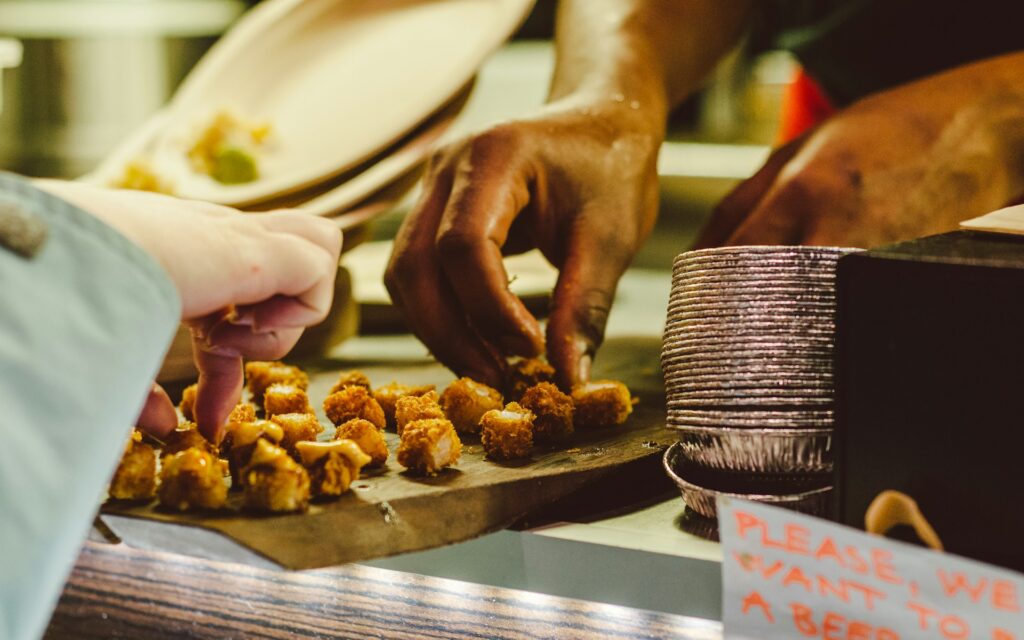Introduction: Food tourism, a tantalizing fusion of travel and gastronomy, offers an immersive experience that goes beyond mere sustenance. Let’s delve into the enticing realm of food tourism and uncover the savory treasures it holds.
Understanding Food Tourism
Food tourism, also known as culinary tourism or gastronomic tourism, involves traveling to destinations primarily to experience the local cuisine and culinary traditions. It’s a quest for authenticity, where travelers seek to engage with local food cultures, ingredients, cooking techniques, and dining rituals. This immersive journey provides a deeper understanding of a region’s history, culture, and way of life through its food.
Benefits of Food Tourism
Food tourism offers a myriad of benefits, tantalizing both the palate and the soul. It fosters cultural exchange, promotes sustainable practices, and stimulates economic growth in local communities.
Planning a Food Tourism Trip
Embarking on a food tourism adventure requires meticulous planning to ensure a delectable experience. Researching destination cuisines, local markets, food festivals, and culinary tours is essential.
Top Destinations for Food Tourism
From bustling street markets to Michelin-starred restaurants, the world is brimming with culinary destinations waiting to be explored. Whether it’s savoring sushi in Tokyo, indulging in pasta perfection in Italy, or relishing the spices of India, each locale offers a unique gastronomic adventure.
Experiencing Local Cuisines
One of the highlights of food tourism is the opportunity to savor authentic dishes prepared by local chefs using traditional recipes and fresh, seasonal ingredients. Whether it’s a humble street food stall or a renowned fine dining establishment.
Immersive Food Experiences
Beyond mere dining, food tourism offers immersive experiences that engage all the senses. From farm-to-table experiences and cooking classes to wine tastings and foraging expeditions, these hands-on activities provide insight into the culinary heritage.
Culinary Tours and Classes
For those eager to hone their culinary skills or deepen their knowledge of local cuisines, culinary tours and classes offer a rich learning experience. Whether it’s mastering the art of sushi rolling in Japan or learning the secrets of French patisserie in Paris.
Food Festivals and Events
Food festivals and events celebrate the vibrant tapestry of global cuisine, bringing together food enthusiasts from near and far to indulge in gastronomic delights and cultural festivities.
Sustainability in Food Tourism
As the demand for food tourism grows, so does the importance of sustainable practices in preserving local ecosystems and culinary traditions. From supporting small-scale producers and reducing food waste to promoting organic farming and responsible fishing practices.
Food Tourisms and Cultural Exchange
Food has a remarkable ability to bridge cultural divides and foster understanding between people from different backgrounds. Through shared meals and culinary traditions, food tourism promotes cultural exchange and mutual respect.
Tips for Food Tourism Enthusiasts
For aspiring food tourists eager to embark on their culinary adventures, here are some tips to enhance your gastronomic journey:
Research destination cuisines and culinary hotspots before your trip.
Be adventurous and open-minded when trying new foods and flavors.
Engage with locals to learn about their food traditions and recommendations.
Support local businesses, markets, and food artisans.
Keep an open palate and embrace unexpected culinary discoveries along the way.
Document your food experiences through photos, videos, and journal entries to cherish the memories.
FAQs:
What is food tourism? Food tourisms, also known as culinary tourisms or gastronomic tourism, involves traveling to destinations primarily to experience the local cuisine and culinary traditions.
Why is food tourisms popular? Food tourisms is popular because it offers travelers the opportunity to engage with local food cultures, ingredients, and cooking techniques, fostering cultural exchange and creating memorable culinary experiences.
How do you plan a food tourisms trip? Planning a food tourisms trip involves researching destination cuisines, local markets, food festivals, and culinary tours, as well as considering factors such as dietary preferences, budget, and travel logistics.
What are some top destinations for food tourisms? Some top destinations for food tourisms include Italy, Japan, India, Thailand, France, Mexico, Spain, and Greece, each offering a rich tapestry of culinary delights and gastronomic experiences.
What are some sustainable practices in food tourisms? Sustainable practices in food tourisms include supporting small-scale producers, reducing food waste, promoting organic farming, and responsible fishing practices to preserve local ecosystems and culinary traditions.
Conclusion
Food tourisms offers a delectable tapestry of flavors, cultures, and experiences that beckon travelers to embark on a culinary adventure like no other. From savoring street food delicacies to mastering the art of regional cuisines, each bite tells a story of tradition, innovation, and the shared joy of food. So, pack your appetite and embark on a journey where every meal is a feast for the senses and a celebration of the rich tapestry of global gastronomy.

